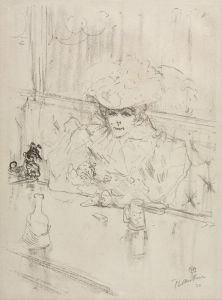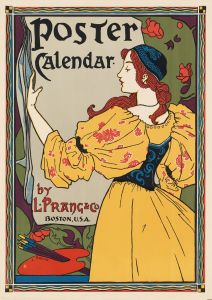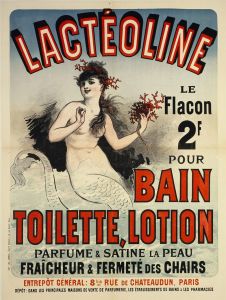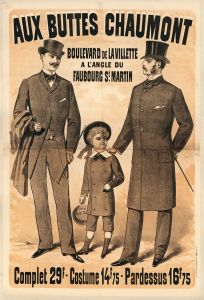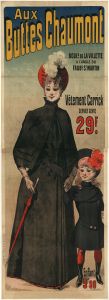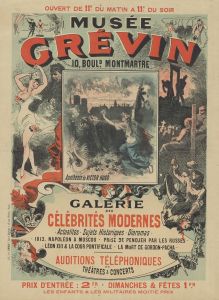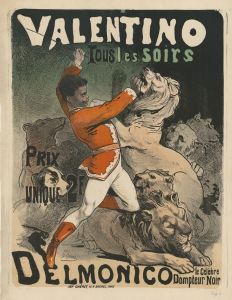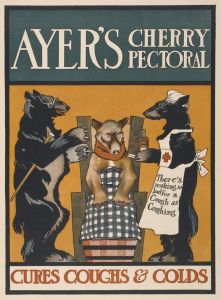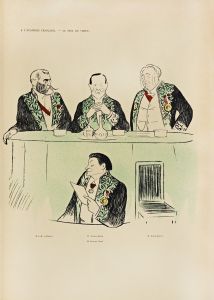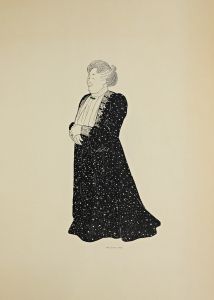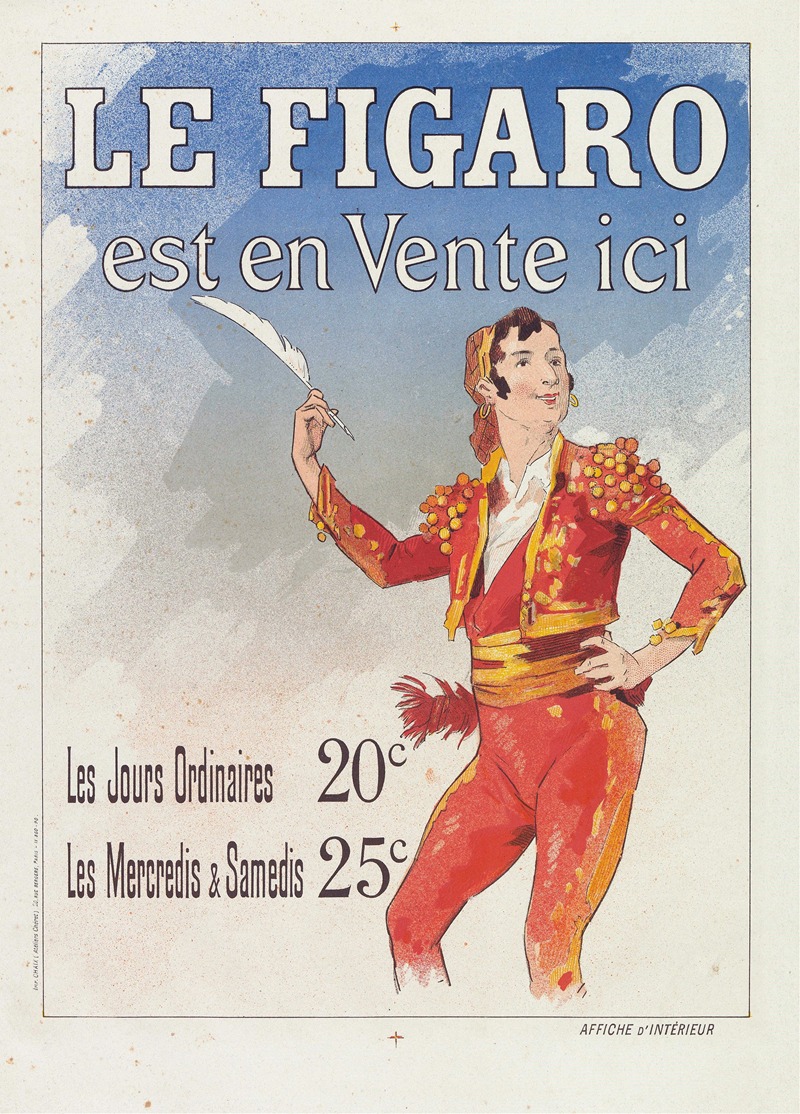
Reclamebiljet voor Le Figaro
A hand-painted replica of Jules Chéret’s masterpiece Reclamebiljet voor Le Figaro, meticulously crafted by professional artists to capture the true essence of the original. Each piece is created with museum-quality canvas and rare mineral pigments, carefully painted by experienced artists with delicate brushstrokes and rich, layered colors to perfectly recreate the texture of the original artwork. Unlike machine-printed reproductions, this hand-painted version brings the painting to life, infused with the artist’s emotions and skill in every stroke. Whether for personal collection or home decoration, it instantly elevates the artistic atmosphere of any space.
Jules Chéret, a pivotal figure in the development of poster art, created "Reclamebiljet voor Le Figaro" during the late 19th century. Chéret, often referred to as the "father of the modern poster," was instrumental in transforming the medium into a respected art form. His work is characterized by vibrant colors, dynamic compositions, and a distinct style that blends elements of fine art with commercial appeal.
"Reclamebiljet voor Le Figaro" is a poster designed to advertise the French newspaper Le Figaro. This piece exemplifies Chéret's innovative approach to poster design, which was groundbreaking at the time. Prior to Chéret, posters were primarily text-based and lacked visual appeal. Chéret revolutionized this by incorporating artistic elements that captured the viewer's attention and conveyed the message more effectively.
The poster features a lively and colorful depiction, typical of Chéret's style, which often included graceful figures, flowing garments, and a sense of movement. His use of color lithography allowed for a wide range of hues and tones, making his posters stand out in the urban landscape. This technique was relatively new and enabled artists to produce large quantities of posters with consistent quality, which was essential for advertising purposes.
Chéret's work on "Reclamebiljet voor Le Figaro" reflects his mastery of composition and his ability to integrate text and image seamlessly. The poster likely includes a central figure or scene that draws the eye, surrounded by text that provides information about the newspaper. Chéret's posters often featured women in dynamic poses, a motif that became a hallmark of his style and helped to popularize the image of the modern, liberated woman in the public sphere.
The impact of Chéret's work extended beyond the realm of advertising. His posters were celebrated for their artistic merit and played a significant role in the development of graphic design as a discipline. Chéret's influence can be seen in the work of later artists and designers who embraced the idea that commercial art could also be aesthetically pleasing and culturally significant.
"Reclamebiljet voor Le Figaro" is an example of how Chéret's posters not only served a commercial purpose but also contributed to the visual culture of the time. His ability to capture the spirit of the Belle Époque era through his art made his work highly sought after, and many of his posters are now considered valuable collectibles.
In summary, Jules Chéret's "Reclamebiljet voor Le Figaro" is a testament to his pioneering role in the evolution of poster art. By combining artistic innovation with commercial objectives, Chéret elevated the poster to a respected art form and left a lasting legacy in both the art world and the field of advertising. His work continues to be studied and admired for its artistic qualities and its impact on visual communication.





